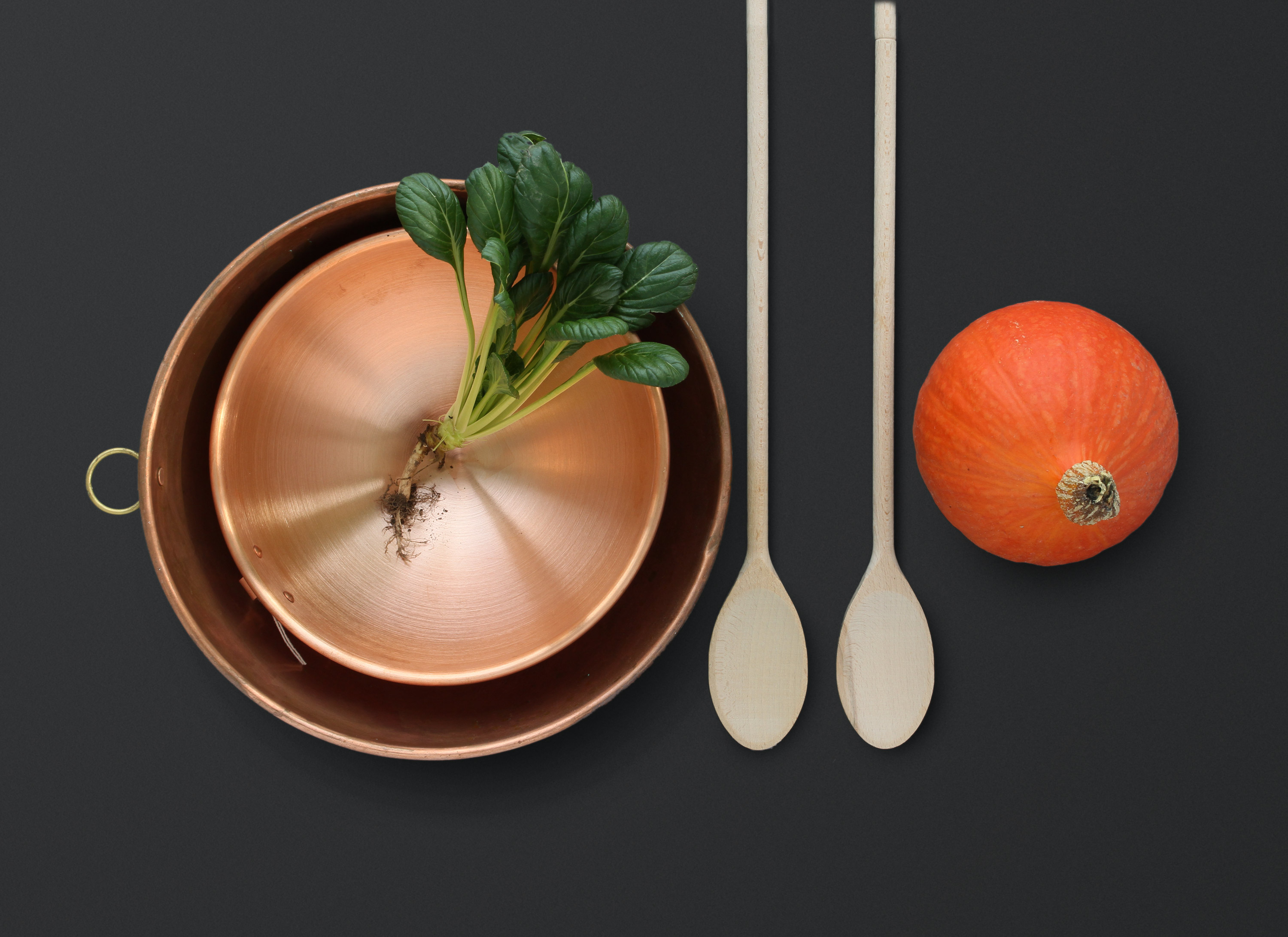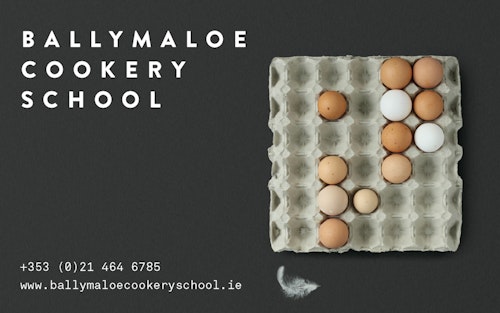How about a little bunny for Easter, I adore rabbit and have delicious memories of the rabbit stews and casseroles of my childhood. A local hunter often came to our door to sell rabbits – as children we took it totally for granted and weren’t a bit squeamish. It was all part of country life. Rabbits were very plentiful and did considerable damage to crops, so there was no question of sentimentality. Rabbit rarely features on menus in Irish restaurants nowadays, yet it regularly stars on smart restaurant menus in the UK and France Many French rural dwellers rear their own rabbits in hutches either beside or in their farmhouses. This recipe for Rabbit with Mustard and Sage Leaves, brings back memories of delicious rabbit stews I ate with Mamie and Papi Vienot in Lille sur le Doube. If you would like to recapture the flavour of your childhood rabbit stew, telephone Pallas Foods 069- 20200 for your nearest supplier – they are not wild rabbits but they are very good and will be delicious in any of the following recipes.
Rabbit with Mustard and Sage leaves
Serves 6
This recipe is also delicious made with chicken.
1 nice rabbit about 2-3 lbs(1.1 – 1.35 kgs) or 1 chicken
6 fresh sage leaves
2 teasp. mustard powder
2 teasp. grainy mustard, eg. Moutarde de Meaux
4 fl ozs (120 ml) dry white wine
 oz (15g) butter
1 dessertsp. oil
salt and freshly ground pepper
1 tablesp. wine vinegar
18 baby onions
8 fl ozs (250 ml) creme fraiche or fresh cream and lemon juice
a little roux (optional)
Garnish
fresh sage leaves
Cut the rabbit into portions. Put into a terrine with the chopped sage leaves. Mix half the mustard powder and a half the grainy mustard with 2 fl ozs (50ml) water. Pour this and the wine over the rabbit and leave to marinade for about 1 hour.
Drain the rabbit pieces and dry them well. Put the butter and oil into a wide saute pan and lightly brown the rabbit on all sides, then remove to a casserole. Degrease the pan, deglaze with the vinegar and pour this and the marinade on to the rabbit. Add the baby onions and the rest of the mustard. Add another 2 fl ozs (50 ml) water and salt and stir well. Cover and leave to cook on a gentle heat for 1 hour approx.
When the rabbit is cooked, take out the pieces and arrange on a hot plate with the onions (making sure the onions are fully cooked). Degrease, add the cream to the pot and reduce on a high heat until it thickens, whisking in a little roux if necessary. Taste and sharpen with lemon juice if necessary. Pour the sauce over the rabbit pieces – through a sieve if you prefer a smoother sauce. Decorate with the rest of the sage leaves and serve immediately.
Roast Saddle of Rabbit with Fig and Prune Mustard
- adapted from Maggie Beer’s recipe in ‘Maggie’s Table’ published by Viking. Serves 4 8 medium onions 3 large rabbit saddles 1½ ozs (35g) butter extra virgin olive oil 2 tablesp. freshly plucked lemon thyme leaves freshly ground black pepper 6 slices streaky bacon or pancetta First roast the onions – see recipe Preheat the oven to 220C/425F/regulo 7. Carefully remove all sinew from the rabbit saddles. Brush with olive oil, lemon thyme and pepper. Heat butter in a small roasting tin with a dash of olive oil until foaming. Then seal the rabbit very gently until pale-golden brown. Transfer to the oven and cook for 12-15 minutes. Remove the rabbit from the oven, then turn the saddles over and allow them to rest for 8 minutes. While the rabbit is resting, crisp the streaky bacon or pancetta on a baking tray in the oven or on a frying pan. Serve the rabbit with the crisp bacon or pancetta, roast onion and a dollop of Fig and Prune Mustard (see recipe). Fig and Prune Mustard Also delicious with the rillettes below or a lamb chop. Makes 1.5 litres 14oz (400g) dried figs 14 oz (400g) pitted prunes 10fl.ozs (300ml) red-wine vinegar 2 cinnamon sticks 4 fl.ozs (125ml) grainy mustard Finely chop the figs and prunes. Bring the vinegar, cinnamon sticks and dried fruit to a gentle simmer in a non-reactive saucepan and cook until the fruit is soft. Remove the cinnamon sticks and blend the mixture to a coarse texture in a food processor, then fold in the mustard. Spoon into warm, sterilized jars and seal with screw-top lids, then invert the jars to create a vacuum. Roast Onions I'm always surprised that so few people cook onions in this ultra simple way. We call them roast onions but I suppose strictly speaking they are baked, one way or the other they are absolutely delicious, my children adore them. Choose small or medium sized onions. Preheat the oven to 200C/400F/regulo 6. Bake the unpeeled onions until soft this can take anything from 10 minutes to 30 minutes depending on size. Serve in their jackets, eat by cutting off the root end, squeeze out the onion and eat with butter and sea salt.
Maggie Beer’s Rabbit Rillettes
(from Maggie’s Table by Maggie Beer) Maggie says that people frightened of fat are unlikely to try these, but they are the losers! Cooking and preserving meat in fat (whether its rabbit, hare, goose, duck) is a staple of her kitchen and it’s the best way of using the legs. Makes 750ml 3 rabbits 2¼ oz (55g) sea salt 2 tablesp. fresh thyme leaves 1 tablesp. juniper berries 2 teasp. peppercorns 18 fl.ozs (500ml) rendered chicken or duck fat Joint the rabbits, leaving the saddles, kidneys and livers for another dish. Put the legs and shoulders in a glass dish with the seasoning and leave for several hours. Preheat the oven to 160C/325F/regulo 3. Put the legs into the bottom of the heaviest-based pot you have, then add the shoulders. Melt the rendered fat in a saucepan, then pour enough of this over the rabbit to just cover the meat. Cover tightly and cook in the oven for 4-5 hours, stirring occasionally, The rabbit must cook very slowly and must never boil, otherwise it will toughen. Drain the fat from the cooking pot and strain it into a container. The meat should be falling off the bone. Shred the meat with 2 forks, discarding the bones. When the fat is nearly cold, pour enough over the meat to bind it together. Check for seasoning – rillettes are traditionally highly seasoned. Pack the rillettes into glass or china dishes. If sealed with a layer of melted fat, they will keep refrigerated for up to 3 weeks. Serve the rillettes with toast and Fig and Prune Mustard



